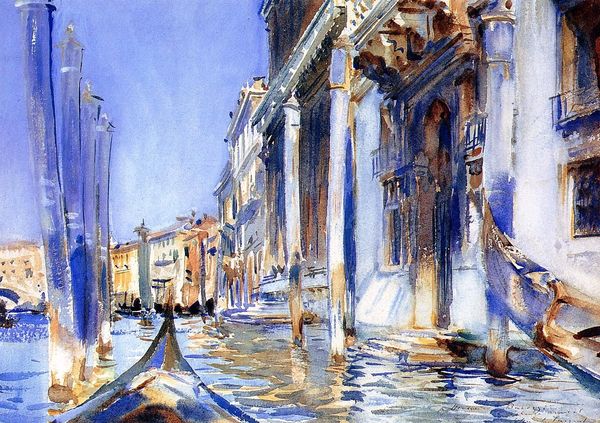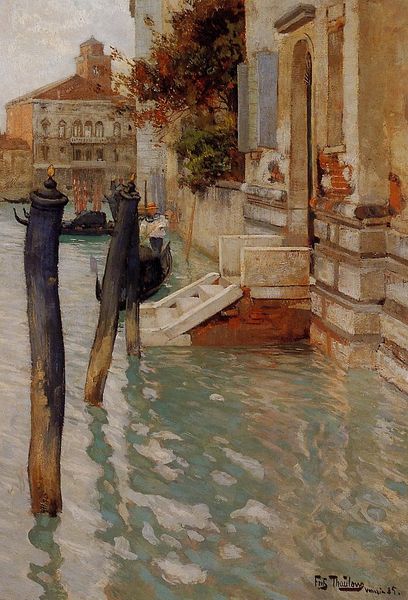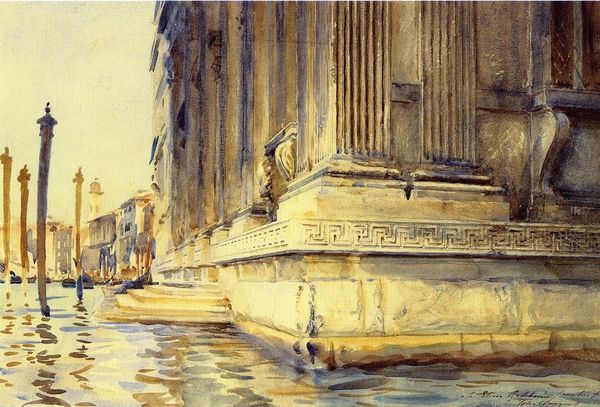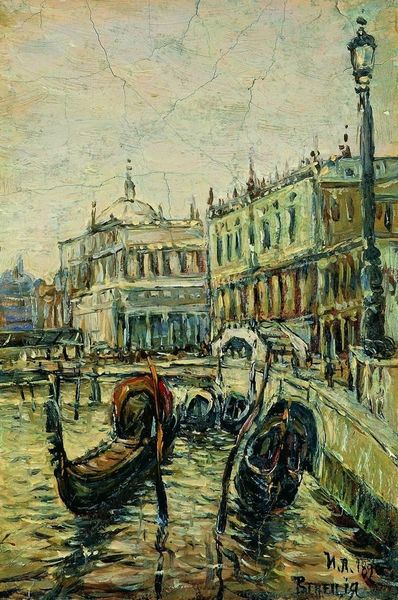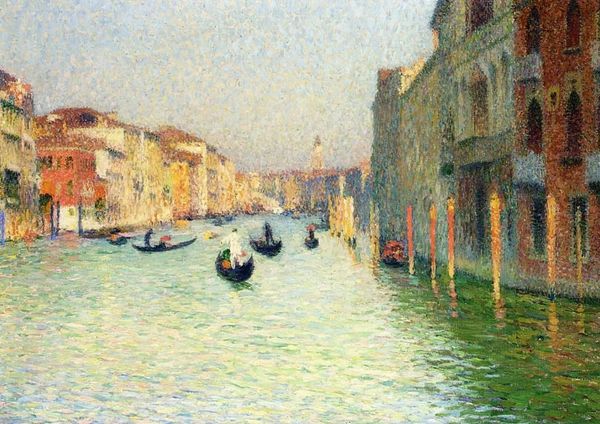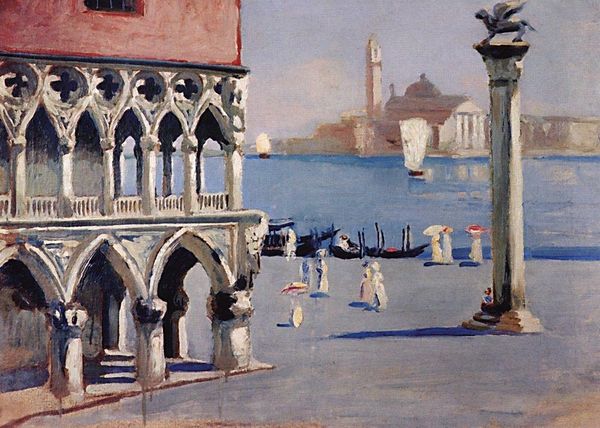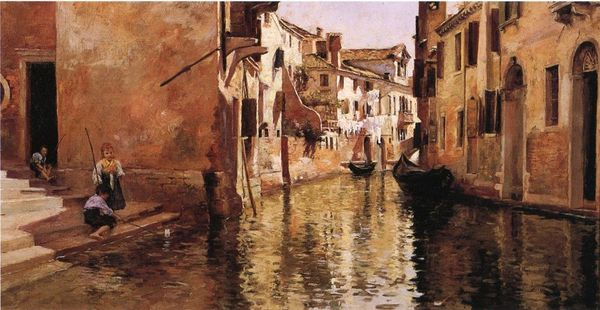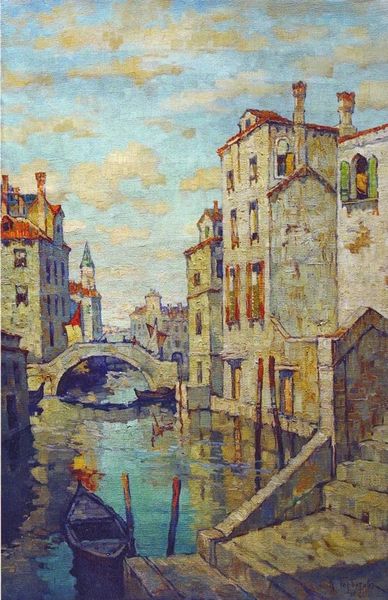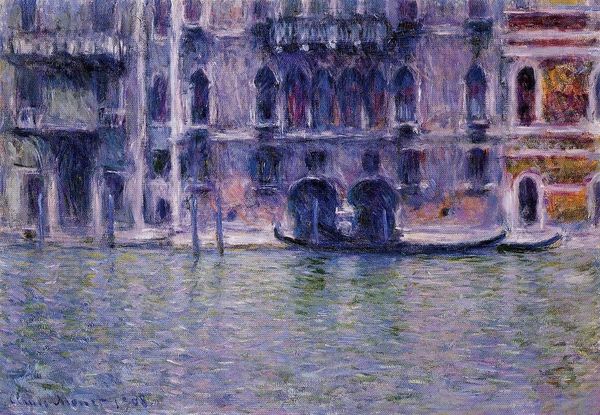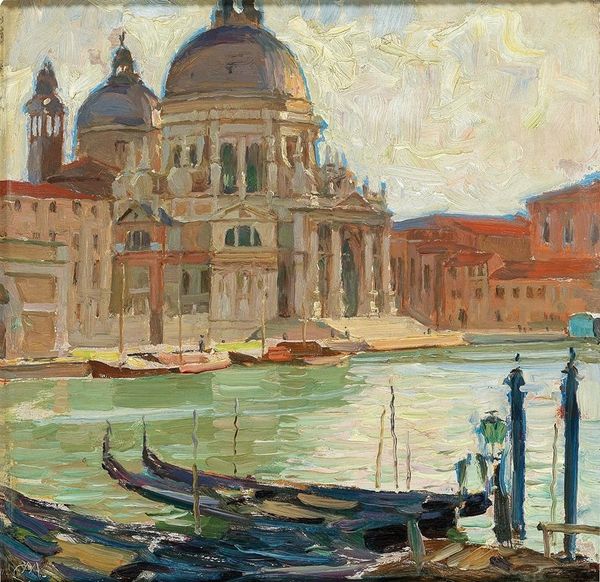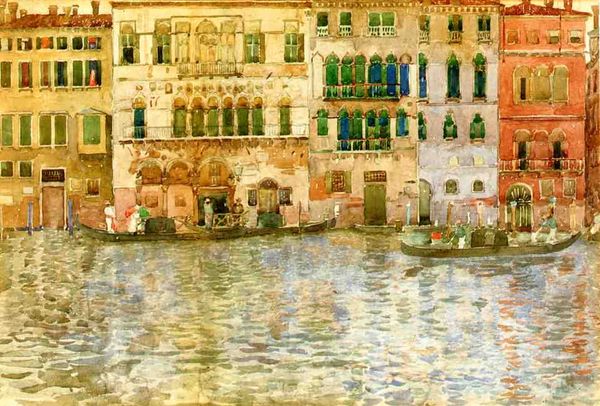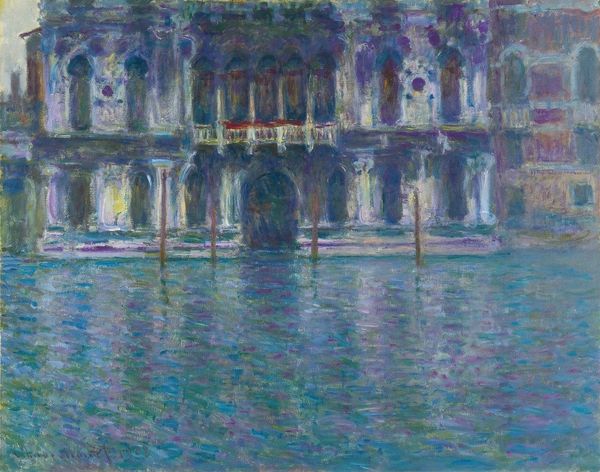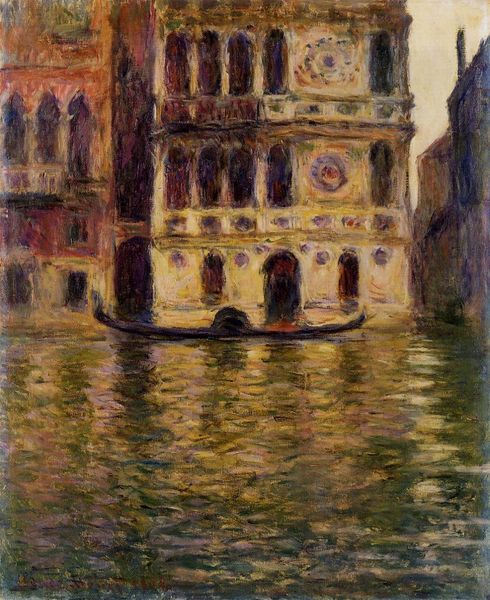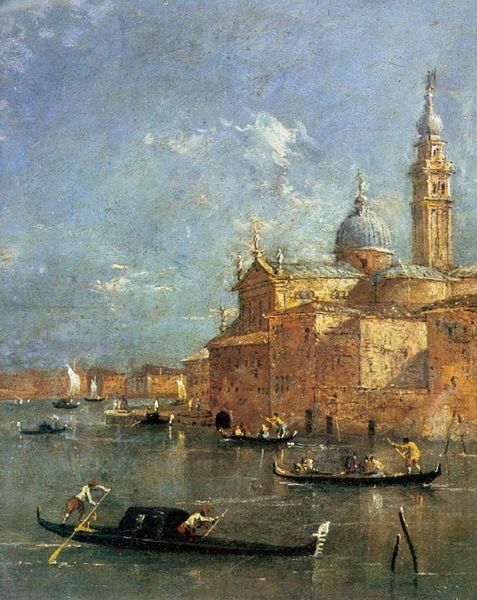
Copyright: Public domain
Curator: What a shimmering surface! The reflections are immediate. Editor: Indeed. This piece, simply titled "Venice," was completed in 1881 by William Logsdail. Notice how Logsdail plays with light and color to evoke the unique atmosphere of the city. Curator: Absolutely. And beyond the picturesque scene, there’s a feeling of melancholy, wouldn’t you say? A stillness that captures Venice not as a bustling port, but as a place steeped in history, maybe even longing. Editor: It's fascinating you mention melancholy, because Venice, particularly in the late 19th century, carried a weight of nostalgia. Its role as a major power had faded, and it was increasingly seen through a Romantic lens as a city of faded grandeur. Artists flocked there precisely for that sense of poignant beauty. Curator: The repeated verticality of the mooring posts against the classical architecture seems so symbolic. Like pickets dividing us from the splendor and wealth on display here. Even their reflections look trapped in the water’s surface. Editor: Those posts are also profoundly practical. Essential for the gondolas and other boats that are part of Venice’s lifeblood. Logsdail, while seemingly painting a purely aesthetic scene, subtly acknowledges the city’s functional aspects, rooting the romantic vision in a real place. Curator: I see how Logsdail balances this, yes. It's an interesting counterpoint. You are so right to point to how, in Venetian painting generally, it can so easily devolve into something quite shallow. He manages a synthesis that honors the place with an authenticity not always seen in impressions of this city. Editor: Well, by all accounts, Logsdail aimed for accuracy, using photographs and preparatory sketches to depict Venice with great realism. Though the brushwork is certainly Impressionistic in its looseness. He successfully captures the textures and subtle nuances of the city. This approach speaks to shifting artistic priorities in the late 19th century. Artists were concerned with accurately capturing visual experiences while engaging with history. Curator: This dialogue helps highlight this work. Thank you for offering some cultural history with this landscape, contextualizing what otherwise might appear to some viewers like mere eye candy! Editor: And thank you. Your insights into symbolism provide a richness to this particular piece that elevates it.
Comments
No comments
Be the first to comment and join the conversation on the ultimate creative platform.
